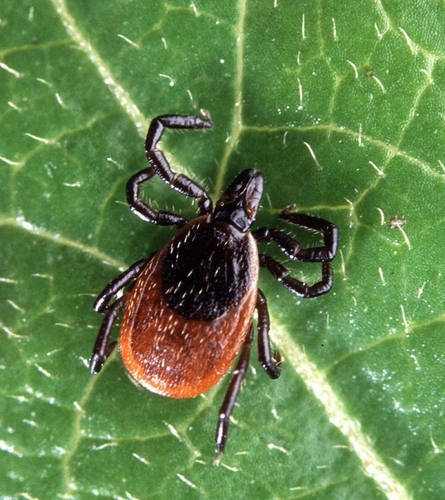SAXTONS RIVER — In 1995, a young woman discovered a rash that looked strangely like a bullseye on her stomach, but she ignored it. A few years later she began having pain in her knees, irregular heartbeats, then neck pain.
After her feet began to hurt, fatigue set in, and she experienced “brain fog,” she requested a Lyme disease test. The results were negative, and no treatment was prescribed. A second test proved “suggestive,” and she began a course of antibiotics. For a while, she felt better - then much worse. Her doctor suggested she see a psychiatrist.
Her story is not atypical.
“Chronic Lyme disease patients may face a long, hard fight to wellness,” according to the International Lyme and Associated Diseases Society (ILADS). “Without proper treatment, [these patients] have a poorer quality of life than patients with diabetes or a heart condition.”
This perspective is alarming, given that Vermont now has one of the highest rates of the disease in the country.
While only 11 cases of Lyme disease were reported in Vermont in 2002, by 2013 that number had risen to 674. Now the disease is endemic to the state.
* * *
Lyme disease, transmitted by the bite of a small tick, is caused by bacteria that can quickly infect multiple organs and produce a wide range of symptoms.
The disease is known as the “great imitator” because it's frequently attributed to other maladies, then goes untreated.
While early and adequate treatment with antibiotics can cure Lyme, it is complex to diagnose, and reliable diagnostic tests remain unavailable. Two sequential blood tests, the ELISA and the Western Blot, are both inaccurate. Compounding the problem, many doctors don't conduct the second, more accurate test if the first one returns a negative result, accurate or not.
Professional and scientific agencies and organizations continue to advocate treating Lyme with antibiotics. But many researchers and clinicians are concerned that short-term-antibiotic treatment is inadequate, especially for chronic Lyme disease. They advocate adjunct therapies, including probiotics, physical therapy, massage, and nutritional support to boost the immune system.
Colchester family physician Carol Gardner is one of these doctors. She worries about resistance among physicians because adjunct modalities differ from the standard protocol advocating antibiotics.
“The traditional thinking is that there's not that big of a problem and it can be cleared up with a minimal amount of antibiotics,” she says. “But Lyme disease increased tenfold nationally by 2013 according to CDC statistics. That's 1.5 times more than breast cancer and six times higher than HIV/AIDS!”
Gardner and others worry that “doctors are missing the mark,” she says.
“They need to alleviate patients' suffering and recognize that it's not 'all in your head.' A patient's fatigue or aching muscles shouldn't be dismissed or attributed to other causes. Doctors need to be 'Lyme-literate,' and to use their clinical judgment in addition to running lab tests.”
The Academy Award semi-finalist documentary Under Our Skin reveals the severity and impact of Lyme disease as patients share their struggle to be diagnosed and treated properly, and to survive the long-term impact of chronic Lyme.
The film also reveals the chilling possibility that Lyme might be the root cause of several neurological diseases such as Lou Gehrig's Disease (amyotrophic lateral sclerosis), multiple sclerosis, and Alzheimer's disease. Lyme has been passed from mother to baby in utero, and there is the suggestion that it might be sexually transmitted.
* * *
All of that makes it outrageous that the conservative Infectious Disease Society of America (IDSA), which writes treatment guidelines that are beyond faulty and which denies the existence of chronic Lyme, has worked hard to discredit physicians who have successfully treated long-term Lyme effects, going so far as to remove some doctors' licenses to practice medicine.
The film (which has a sequel, Emergence) is a chilling tale about medicine and money as well as microbes. It offers an unprecedented picture of a frightening epidemic and exposes the hidden story of medical and scientific malfeasance and neglect.
“Lyme disease is a canary in the coal mine,” says the film's director, Andy Abrahams Wilson. “What has gotten under our skin is not just a microorganism but a lethal system which has abandoned some of the neediest, and threatens us all.”
See both films. Make your concerns known to your elected officials, the National Institutes of Health, the IDSA, and the Department of Health and Human Services. Tell your doctor you want to be treated preemptively if you develop troubling symptoms, especially between April and September.
Then enjoy a day out – wearing a hat, long sleeves, and long pants tucked into your socks, all of which are sprayed with DEET.
As Bette Davis would say, hang on to your hats. It's going to be a long summer.
